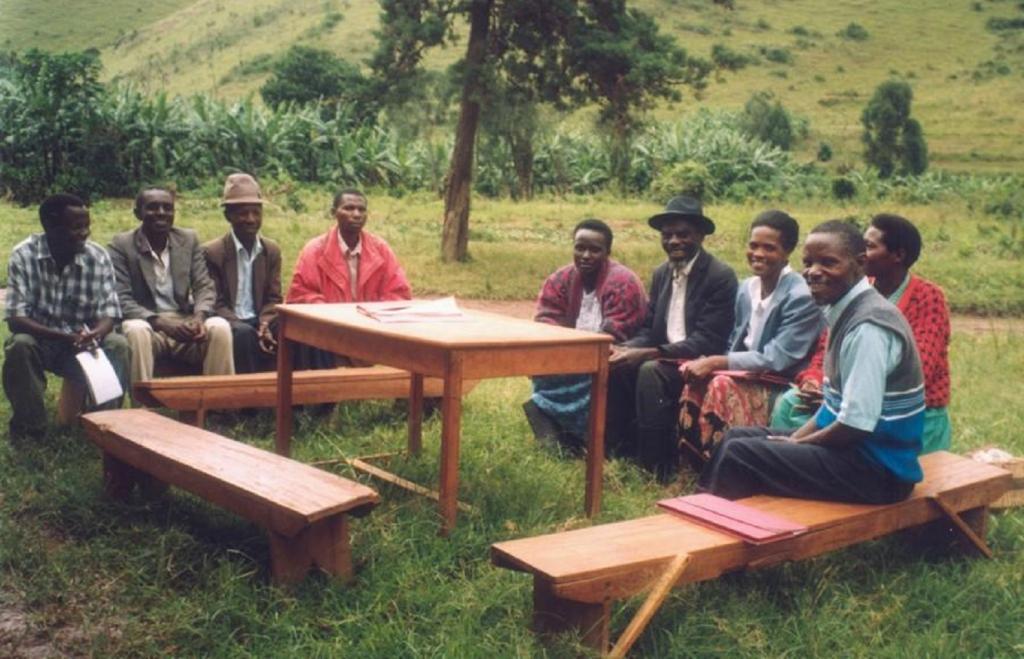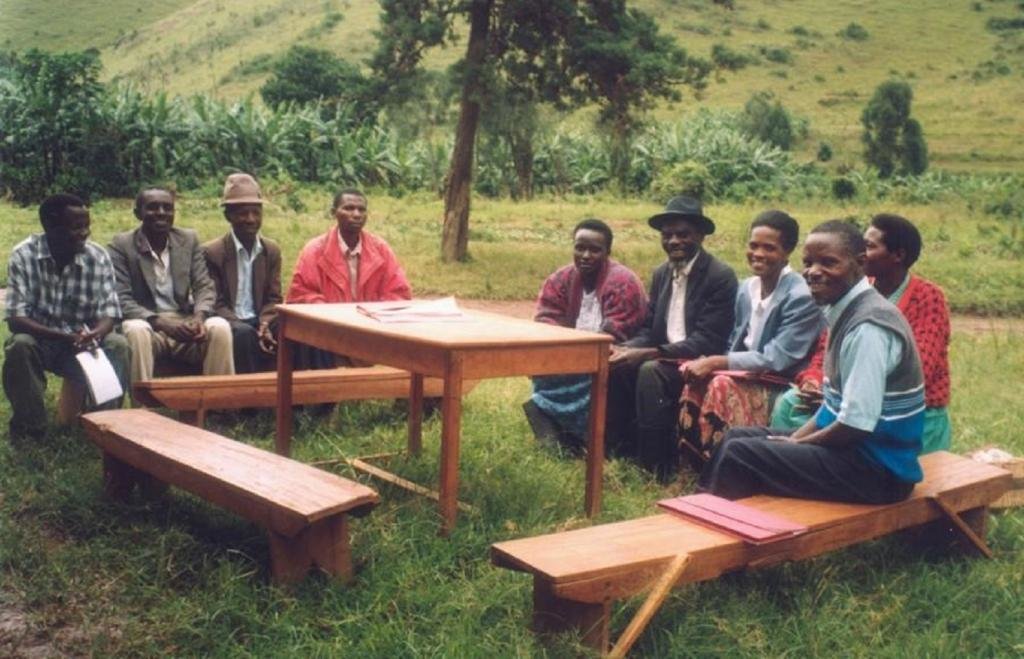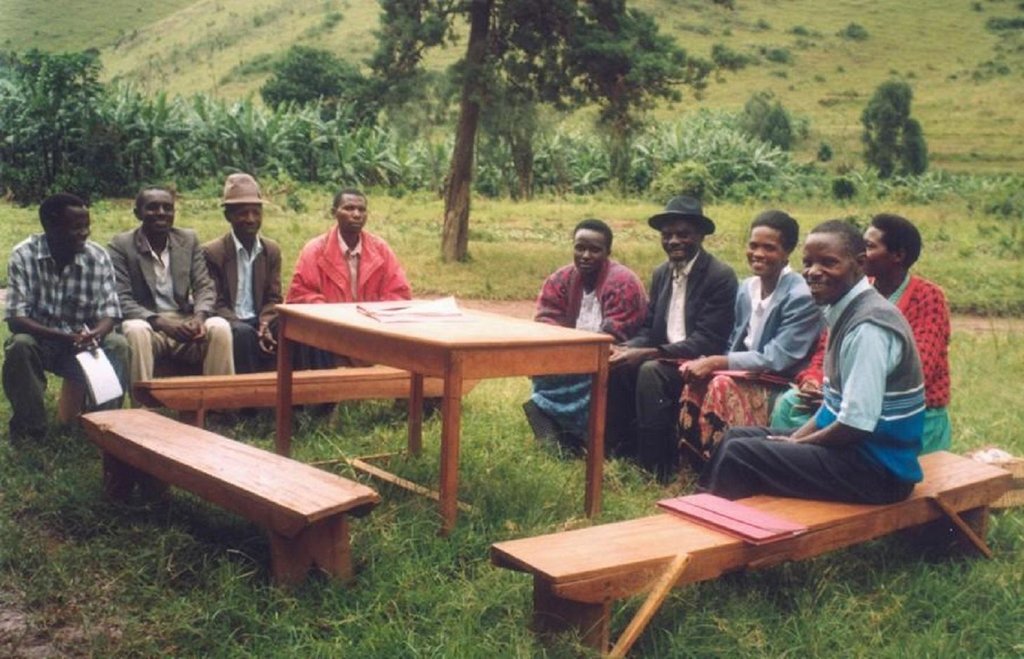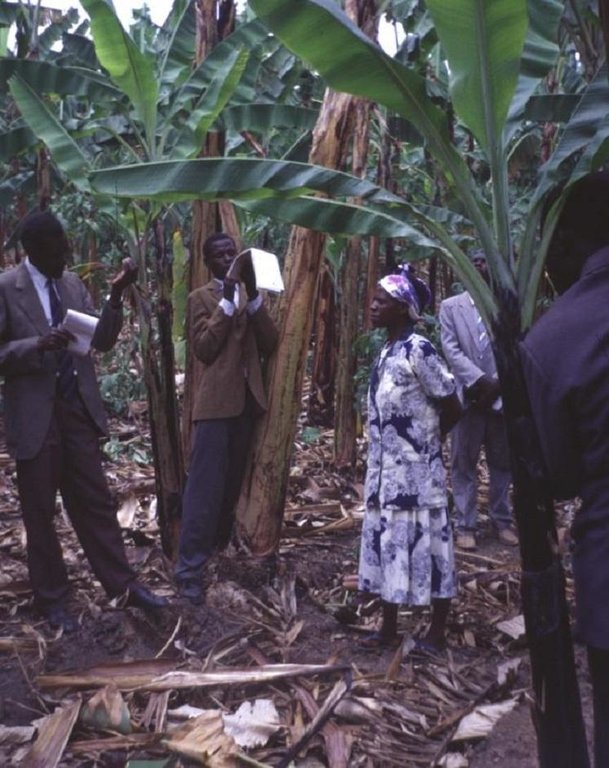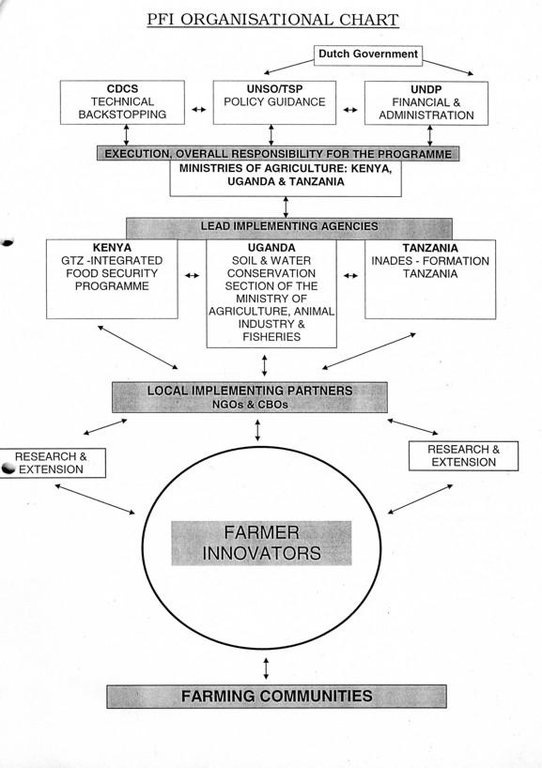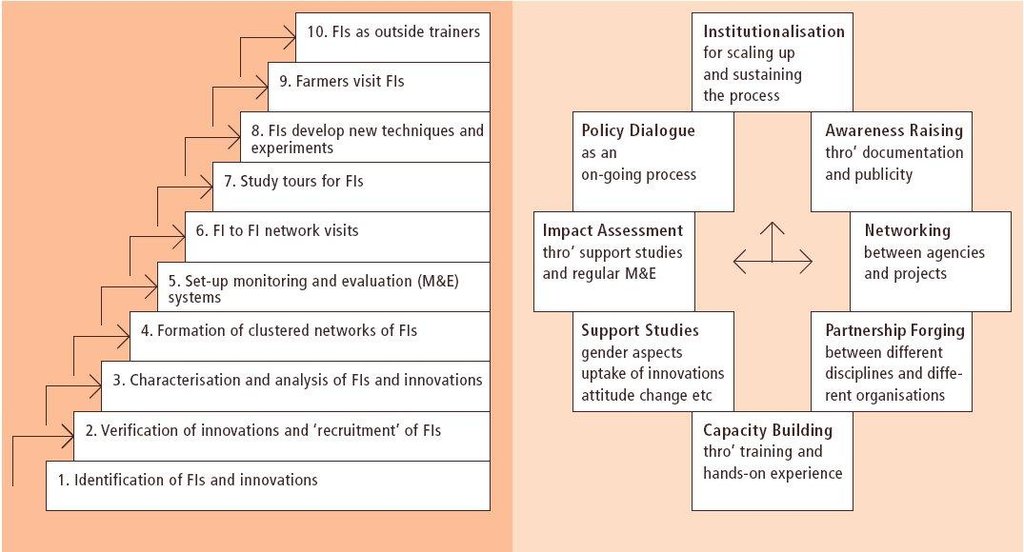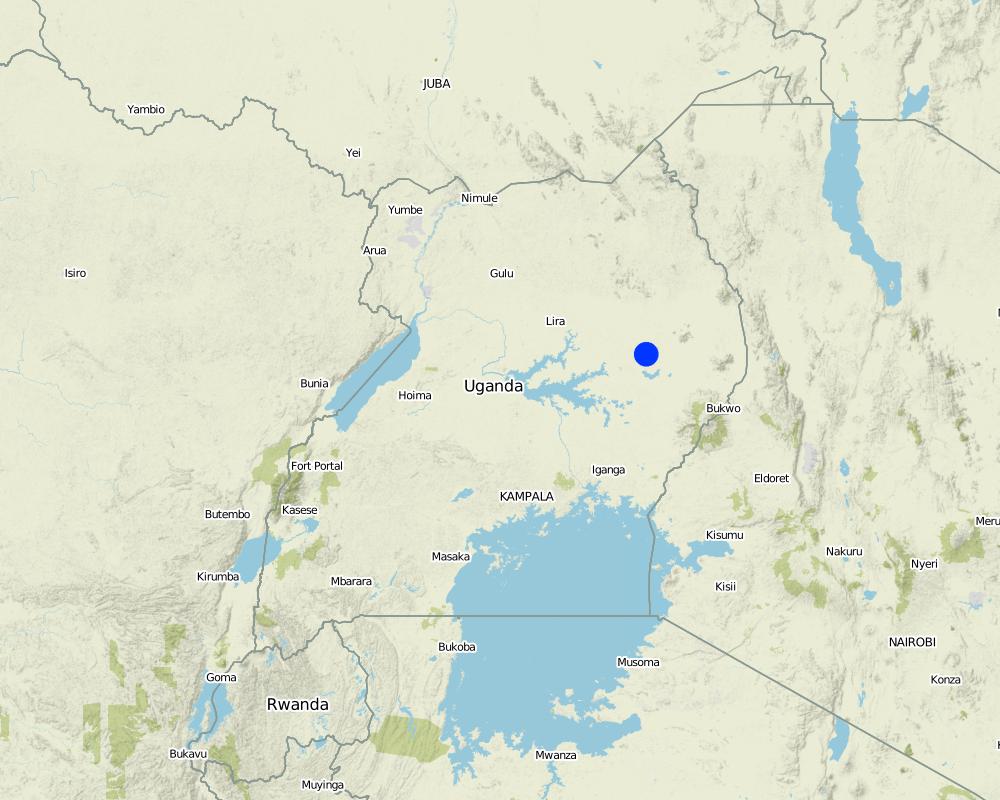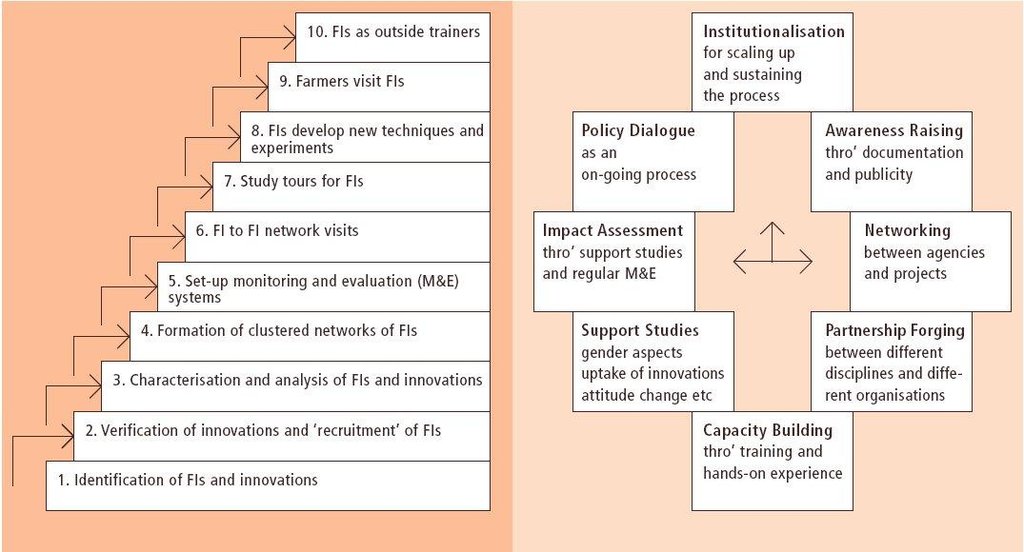Promoting farmer innovation [Уганда]
- Шинийг нээх:
- Шинэчлэх:
- Мэдээлэл цуглуулсан: Kithinji Mutunga
- Редактор: –
- Хянагч: Fabian Ottiger
approaches_2418 - Уганда
Бүлгүүдийг үзэх
Бүгдийг харуулах Бүгдийг хаах1. Ерөнхий мэдээлэл
1.2 Арга барилыг баримтжуулах болон үнэлгээ хийхэд оролцсон хүн эсвэл байгууллагын холбоо барих хаяг
ГТМ мэргэжилтэн :
Арга барилыг баримтжуулах/үнэлэх ажилд дэмжлэг үзүүлсэн байгууллага(ууд)-ын нэр (шаардлагатай бол)
FAO Food and Agriculture Organization (FAO Food and Agriculture Organization) - ИталиАрга барилыг баримтжуулах/үнэлэх ажилд дэмжлэг үзүүлсэн байгууллага(ууд)-ын нэр (шаардлагатай бол)
CIS-Centre for International Cooperation (CIS-Centre for International Cooperation) - НидерландАрга барилыг баримтжуулах/үнэлэх ажилд дэмжлэг үзүүлсэн байгууллага(ууд)-ын нэр (шаардлагатай бол)
Ministry of Agriculture, Livestock and Fisheries (MoA) - Кени1.3 WOCAT-аар баримтжуулсан өгөгдлийг ашиглахтай холбоотой нөхцөл
Эмхэтгэгч болон гол мэдээлэгч хүн(хүмүүс) WOCAT аргачлалаар баримтжуулсан мэдээллийг ашиглахтай холбоотой нөхцлийг хүлээн зөвшөөрсөн.
Тийм
1.4 ГТМ-ийн технологийн асуулгын(д) суурь мэдээлэл(д)
2. ГТМ Арга барилын тодорхойлолт
2.1 Арга барилын товч тодорхойлолт
Identification of farmer innovators in SWC and water harvesting, and using them as focal points for visits from other farmers to spread the practices and stimulate the process of innovation.
2.2 Арга барилын дэлгэрэнгүй тодорхойлолт
Арга барилын дэлгэрэнгүй тодорхойлолт :
Aims / objectives: The Promoting Farmer Innovation (PFI) approach seeks to build on technical initiatives - innovations in the local context - developed by farmers themselves in dry/marginal areas where the conventional approach of transfer of technology from research to extension agents, and then on to farmers, has so often failed. The approach basically comprises identifying, validating and documenting local innovations/initiatives. Simple monitoring and evaluation systems are set up amongst those innovative farmers who are willing to co-operate. Through contact with researchers, extra value is added to these techniques where possible. Farmer innovators are brought together to share ideas. Finally, best-bet technologies, in other words those that are considered to be good enough to be shared, are disseminated through farmer-to-farmer extension. This takes two forms. First, farmers are brought to visit the innovators in their farms. Secondly farmer innovators are used as teachers/trainers to visit groups of farmers - including FAOs farmer field schools in some cases. Only in this second form of extension is an allowance payable to the innovator. A ten-step field activity methodology has been developed.
Methods: At programme level, there is capacity building of in-line extension and research staff, who are the main outside actors in the programme. In each of the countries the project has been implemented through a government ministry, which partners various NGOs in the field. The principle, and practice, is not to create separate project enclaves, but to work through existing personnel, sharing buildings and vehicles that are already operational in the area. A programme development process methodological framework shows how the ultimate goal of institutionalisation can be achieved. PFIs first phase, completed in 2000, was financed by the Government of The Netherlands, through UNDP, and was active in Kenya, Tanzania and Uganda.
2.3 Арга барилын зурагууд
2.5 Арга барил нэвтрүүлсэн улс орон / бүс нутаг / байршил
Улс :
Уганда
Улс/аймаг/сум:
East Africa (parts of Kenya, Tanzania and Uganda)
Map
×2.6 Арга барилыг эхлэх, дуусах огноо
Эхлэх жилийг тэмдэглэ:
1996
Хугацаа дуусах жил (Хэрэв арга барил удаанаар ашиглаагүй бол):
2000
2.7 Арга барилын төрөл
- төсөл / хөтөлбөр дээр үндэслэсэн
2.8 Арга барилын үндсэн зорилго, зорилтууд
The Approach focused mainly on SLM with other activities (Better land husbandry practices (eg composting, crop selection))
Improve rural livelihoods through an increase in the rate of diffusion of appropriate SWC/water harvesting technologies based on farmer innovation, and through farmer-to-farmer exchange visits. At a higher level: to demonstrate the effectiveness of such an approach so that it can be institutionalised.
The SLM Approach addressed the following problems: - poor supply of relevant recommendations from research for small scale farmers in marginal areas - poor delivery of SWC technologies (where they exist) to farmers - lack of motivation of research and extension staff - isolation of promising ???innovative??? SWC/water harvesting ideas which address low crop yields, land degradation and poverty - lack of exchange of this knowledge
2.9 Арга барилын хүрээнд хэрэгжсэн Технологи/Технологиудад дэмжсэн эсвэл саад учруулсан нөхцлүүд
нийгэм / соёл / шашны хэм хэмжээ, үнэт зүйлс
- Хазаарлалт
Favoured farmer syndrome: where too much attention is given to particular innovative farmers and jealousy is aroused in others
Treatment through the SLM Approach: Avoid working with innovators who are so exceptional that they are outside society and others cannot relate to them. Rotate the farmers who are used as learning points: in other words once another farmer has adopted the technology, use him or her as the focal point.
санхүүгийн нөөц, үйлчилгээний хүртээмж / боломж
- Хазаарлалт
Danger of identifying innovations that are good technically but too expensive for ordinary farmers to implement.
Treatment through the SLM Approach: Linked to point (1) above: beware of farmers who are too exceptional/too rich.
Бүтэц зохион байгуулалт
- Хазаарлалт
Lack of motivation of research and extension institutions
Treatment through the SLM Approach: Bringing them together with farmer innovatiors
Хууль, эрхзүйн хүрээ (газар эзэмшил, газар, ус ашиглах эрх)
- Хазаарлалт
Who gets the credit for the particular innovation?
Treatment through the SLM Approach: Important to make sure that an innovation is traced back within the locality to its roots, identifying the 'owner'. Especially important when a name is attached to an innovation.
The existing land ownership, land use rights / water rights hindered a little the approach implementation Farmers will only invest time and effort in innovation when they have secure land use rights (though not necessarily ownership), which is the case in all the areas where PFI has been operational. Access to land for women was a problem which inhibits women innovating.
Бусад
- Хазаарлалт
Cultural: Gender imbalance in identification of innovators: women overlooked
Treatment through the SLM Approach: Gender sensitisation and training: bring together the identifiers with the farmers - male and female.
3. Оролцогч талуудын оролцоо ба үүргүүд
3.1 Арга барилд оролцогч талууд болон тэдгээрийн үүргүүд
- Орон нутгийн газар ашиглагч / орон нутгийн иргэд
- ГТМ-ийн мэргэжилтэн/ хөдөө аж ахуйн зөвлөх
- ТББ
All involved et different levels: after implementation mainly government and NGO
- Засгийн газар (шийдвэр гаргагч, төлөвлөгч)
All involved et different levels: after implementation mainly government and NGO
- Олон улсын байгууллага
All involved et different levels: after implementation mainly government and NGO
Хэрэв хэд хэдэн оролцогч талууд оролцсон бол голлох төлөөлөгчийг зааж өгнө үү:
International specialists in collaboration with/after discussions with national specialists and land users
3.2 Арга барилын янз бүрийн үе шатанд орон нутгийн газар ашиглагчид / бүлэглэлүүдийг татан оролцуулах
| Орон нутгийн газар ашиглагч / орон нутгийн иргэдийн оролцоо | Хэн оролцсоныг тодорхойлж, үйл ажиллагааг тайлбарлана уу | |
|---|---|---|
| санаачлага/идэвхжүүлэлт | идэвхигүй | public meetings, interviews/questionnaires, workshops/seminars, rapid/participatory rural appraisal; interviews/Participatory Rural Appraisals etc |
| Төлөвлөгөө | идэвхигүй | rapid/participatory rural appraisal, interviews/questionnaires, public meetings, workshops/seminars; interviews/Participatory Rural Appraisals etc |
| Хэрэгжилт | интерактив | Mainly: farmer-to-farmer exchange, responsibility for minor steps; partly: responsibility for major steps; interviews/Participatory Rural Appraisals etc |
| Мониторинг/ үнэлгээ | интерактив | Mainly: public meetings, measurements/observations; partly: workshop/seminars; monitoring, using forms designed mainly by specialists |
| Research | интерактив | on-farm |
3.3 Диаграм (хэрэв боломжтой бол)
Тодорхойлолт :
Farmer innovation methodology left: Field activities: the ten steps– from identification through to using innovators as trainers. (Critchley, 2000) right: Programme development processes: the framew
3.4 ГТМ-ийн технологи/технологиуд сонгох шийдвэр
Хэрэгжүүлэх Технологи/Технологиудын сонголтыг хийж шийдвэр гаргасан хүнийг тодорхойлно уу:
- ГТМ-ийн мэргэжилтнүүдийн дэмжлэгтэйгээр, голчлон газар ашиглагчид
Тайлбар :
???Best -bet??? technologies chosen by extension agents/researchers based on the selection of innovative farmers??? technologies identified in the field - but the farmers choose (develop) which technology to implement.
Decisions on the method of implementing the SLM Technology were made by by land users* alone (self-initiative / bottom-up)
4. Техникийн дэмжлэг, чадавхи бүрдүүлэх, мэдлэгийн менежмент
4.1 Чадавхи бэхжүүлэх/сургалт
Газар эзэмшигчид / бусад оролцогч талуудад сургалт явуулсан уу?
Тийм
Хэн сургалтанд хамрагдсан бэ:
- Газар ашиглагчид
- SWC specialists, extensionists/trainers
Сургалтын хэлбэр :
- Олон нийтийн уулзалт
- курс дамжаа
Сургалтын хэлбэр :
- farm visits
Хамрагдсан сэвдүүд:
Staff seconded from Ministries of Agriculture/NGOs provide: (1) methodology training for participating staff (2) presentational skill training for farmer innovators and (3) training in gender aspects.
4.2 Зөвлөх үйлчилгээ
Газар ашиглагчдад зөвлөх үйлчилгээ авах боломжтой байдаг уу?
Тийм
Зөвлөх үйлчилгээ үзүүлсэн эсэхийг тогтоо:
- Тогтмол төвд
Тодорхойлолт / тайлбар:
Name of method used for advisory service: Farmer innovator approach; Key elements: There are new roles for government/NGO extension staff under this methodology - as trainers and faci, Identify farmer innovators, form networks of farmer innovators, which meet, Bring farmers to se 'best bet' innovations; 1) Advisory service was carried out through: government's existing extension system, non-governmental agency; Extension staff: mainly government employees 3) Target groups for extension: land users
Advisory service is quite adequate to ensure the continuation of land conservation activities
4.3 Институцийг бэхжүүлэх (байгууллагын хөгжил)
Арга барилаар дамжуулан институц байгуулагдаж эсвэл бэхжсэн үү?
- Тийм, дунд зэрэг
Байгууллагууд бэхжиж, үүсэн бий болсон түвшин(үүд)-г тодорхойлно уу:
- Орон нутгийн
Дэмжлэгийн төрлийг ялга:
- чадавхи бэхжүүлэх / сургалт
Дэлгэрэнгүй мэдээллийг өгнө үү:
training (see also Annex A3)
4.4 Мониторинг ба үнэлгээ
Мониторинг болон үнэлгээ нь арга барилын хэсэг үү?
Тийм
Тайлбар:
bio-physical aspects were regular monitored by 0 through observations; indicators: soils, moisture
technical aspects were regular monitored by 0 through observations; indicators: inputs
socio-cultural aspects were ad hoc monitored by 0 through measurements; indicators: number of men/women participating
economic / production aspects were regular monitored by 0 through observations; indicators: yields
area treated aspects were ad hoc monitored by 0 through observations; indicators: None
no. of land users involved aspects were ad hoc monitored by 0 through observations; indicators: None
There were few changes in the Approach as a result of monitoring and evaluation: Some changes, for example (a) increased numbers of women identified as innovators in response to gender sensitisation/training and (b) ???rotation??? of farmer innovators used for training - that is not using the same farmers all the time, as this can create envy. E.g. also better integration with government services/system for technical backstopping and extension
4.5 Судалгаа
Судалгаа арга барилын хэсэг нь байсан уу?
Тийм
Сэдвийг тодруулна уу:
- Технологи
- socio-economics
Дэлгэрэнгүй мэдээллийг өгч, хэн судалгаа явуулсныг бичнэ үү:
Theoretically, researchers should respond to the farmers??? research agenda, though this has proved difficult to achieve in practice. Apart from process monitoring of the methodology, which has led to improvements, technical research into the innovations has been relatively weak.
Research was carried out on-farm
5. Санхүүгийн болон гадаад материаллаг дэмжлэг
5.1 ГТМ-ийн Арга барилын бүрэлдэхүүн хэсгийн жилийн төсөв
Хэрэв жилийн төсөв тодорхойгүй бол хягаарыг тодруулна уу:
- 100,000-1,000,000
Тайлбар (жнь: санхүүжилтийн гол эх үүсвэр / гол хандивлагчид):
Approach costs were met by the following donors: government (national government): 20.0%; international (International agency): 60.0%; local community / land user(s) (-): 20.0%
5.2 Газар ашиглагчдад санхүүгийн / материаллаг дэмжлэг үзүүлсэн
Технологи / технологийг хэрэгжүүлэхэд газар ашиглагчид санхүүгийн / материаллаг дэмжлэг авсан уу?
Үгүй
5.3 Тодорхой зардлыг даахад чиглэсэн дэмжлэгт (хөдөлмөрийн хүчийг оролцуулаад)
Хэрэв газар ашиглагчийн хөдөлмөрийн хүч чухал байсан бол энэ нь аль хэлбэр байсан:
- сайн дурын
Тайлбар:
done by the farmers themselves
plant materials - farmers often are given or collecting planting.
Support to institutions has been moderate: it has mainly taken the form of transporting existing groups (for example womens groups/church groups) to learn from farmer innovators.
5.4 Кредит
Арга барилын хүрээнд ГТМ-ийн үйл ажиллагаанд зориулж зээлд хамрагдсан уу?
Үгүй
6. Нөлөөллийн дүн шинжилгээ ба дүгнэлт
6.1 Арга барилын нөлөөллүүд
Арга барил нь ГТМ-ийн технологийг хэрэгжүүлэхэд саад учруулсан газрын эзэмшил / ашиглах эрхийг сайжруулахад чиглэсэн үү?
- Үгүй
- Тийм, бага зэрэг
- Тийм, зарим
- Тийм, их
Gender sensitisation training may have helped. The problem is unlikely to be overcome in the near future.
6.3 Арга барилын үйл ажиллагааны тогтвортой байдал
Газар ашиглагчид арга барилаар дамжуулан хэрэгжүүлсэн арга хэмжээг тогтвортой хадгалж чадах уу (гадны дэмжлэггүйгээр)?
- Тодорхойгүй
Хэрэв үгүй эсвэл тодорхойгүй бол дэлгэрэнгүй тайлбар өгнө үү:
There are examples of spontaneous voluntary continuation of farmer innovator groups in all three countries - but on a reduced level after initial project support ended.
6.4 Арга барилын тогтвортой/давуу тал/боломжууд
| Эмхэтгэгч, бусад мэдээлэл өгсөн хүмүүсийн өнцгөөс тодорхойлсон давуу тал/боломжууд |
|---|
| Builds on local ideas (How to sustain/ enhance this strength: Continue the approach and institutionalise.) |
| Revitalises the extension service (How to sustain/ enhance this strength: Train and make use of existing Government extension agents.) |
| attractive to stakeholders at all levels (How to sustain/ enhance this strength: Involve and inform stakeholders at all levels of plans and progress.) |
| Gives land users more confidence in their own abilities (How to sustain/ enhance this strength: Continue to prioritise farmers and keep them at centre of activities.) |
| Offers new locally tested ideas/technologies which work (How to sustain/ enhance this strength: Keep the focus on the farmers??? initiatives and use participatory technology development processes to improve these technologies.) |
6.5 Арга барилын дутагдалтай/сул тал/аюул болон тэдгээрийн хэрхэн даван туулах арга замууд
| Эмхэтгэгч, бусад мэдээлэл өгсөн хүмүүсийн өнцгөөс тодорхойлсон сул тал/ дутагдал/ эрсдэл | Тэдгээрийг хэрхэн даван туулах вэ? |
|---|---|
| Dependent on individual commitment and flexibility | Training in skills and methodologies. |
| Does not follow the conventional institutional chain of command | Considerable training in skills and methodologies required. |
| Sometime confers too much prestige on a particular group of ???favoured farmers??? | Rotate??? farmers who are the focus of attention. |
| Researchers reluctant to respond to farmers??? agenda | Effort needed to convince research staff of the need for, and potential benefits from, joint Critchley WRS (2000) Inquiry, Initiatives and Inventiveness: Farmer Innovators in East Africa. Phs Chem Earth (B), Vol 25, no 3, pp 285??¡§288Critchley WRS (2000) Inquiry, Initiatives and Inventiveness: Farmer Innovators in East Africa. Phs Chem Earth (B), Vol 25, no 3, pp 285??¡§288Critchley WRS (2000) Inquiry, Initiatives and Inventiveness: Farmer Innovators in East Africa. Phs Chem Earth (B), Vol 25, no 3, pp 285??¡§288Critchley WRS (2000) Inquiry, Initiatives and Inventiveness: Farmer Innovators in East Africa. Phs Chem Earth (B), Vol 25, no 3, pp 285??¡§288research with farmers. |
7. Суурь мэдээлэл болон холбоосууд
7.1 Мэдээллийн эх үүсвэр/аргууд
- Хээрийн уулзалт, судалгаа
- Газар ашиглагчтай хийсэн ярилцлага
7.2 Холбогдох бүтээлийн ишлэл
Гарчиг, зохиогч, он, ISBN:
Critchley WRS (2000) Inquiry, Initiatives and Inventiveness: Farmer Innovators in East Africa. Phs Chem Earth (B), Vol 25, no 3,Mutunga K and Critchley W (2001) Farmers??? initiatives in land husbandry. Regional Land Management Unit, Nairobi, KenyaCritchley W and Mutunga K (2003) Local innovation in a global context: documenting farmer initiatives in land husbandry through WOCAT.Critchley et al. (1999). Promoting farmer innovationPromoting farmer innovation VIDEO
Хаанаас авч болох вэ? Зардал?
RELMA, Nairobi (cost free)RELMA, Nairobi (cost free)
Гарчиг, зохиогч, он, ISBN:
Mutunga K and Critchley W (2001) Farmers initiatives in land husbandry. Regional Land Management Unit, Nairobi, Kenya
Гарчиг, зохиогч, он, ISBN:
Critchley W and Mutunga K (2003) Local innovation in a global context: documenting farmer initiatives in land husbandry through WOCAT.
Гарчиг, зохиогч, он, ISBN:
Critchley et al. (1999). Promoting farmer innovation
Хаанаас авч болох вэ? Зардал?
RELMA, Nairobi (cost free)
Гарчиг, зохиогч, он, ISBN:
Promoting farmer innovation VIDEO
Хаанаас авч болох вэ? Зардал?
RELMA, Nairobi (cost free)
Холбоос ба модулууд
Бүгдийг харуулах Бүгдийг хаахХолбоосууд
Холбоос байхгүй байна
Модулууд
Модуль байхгүй байна


